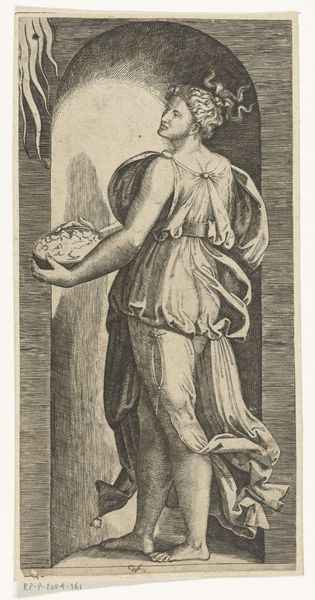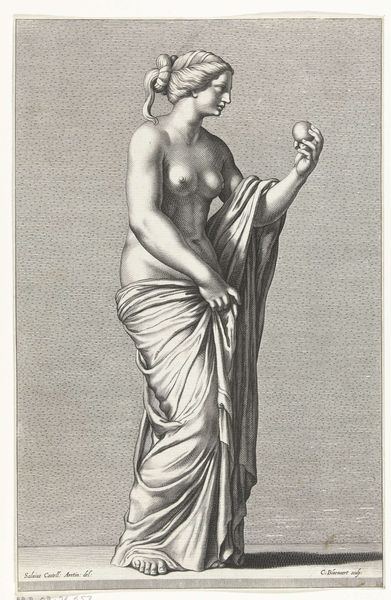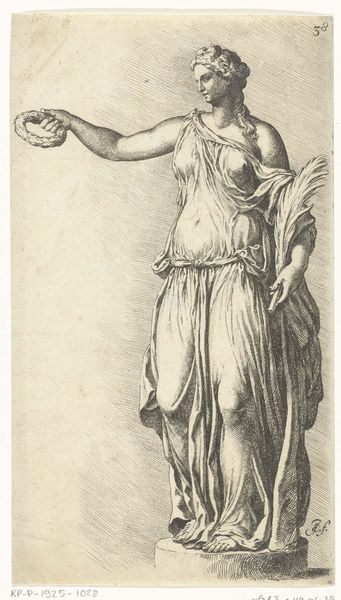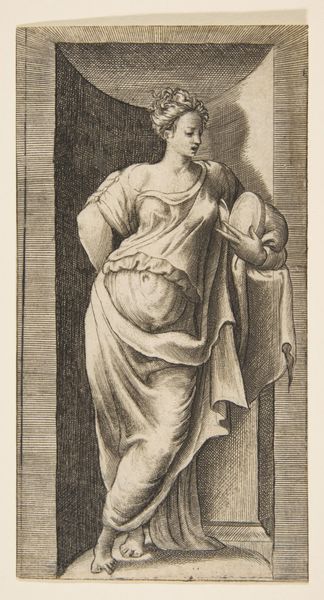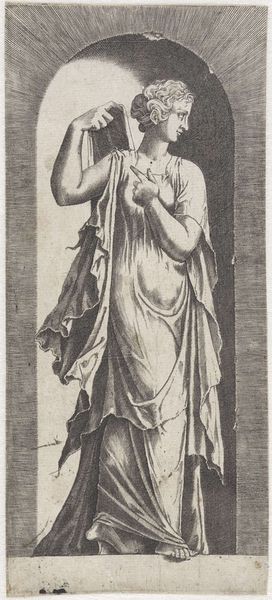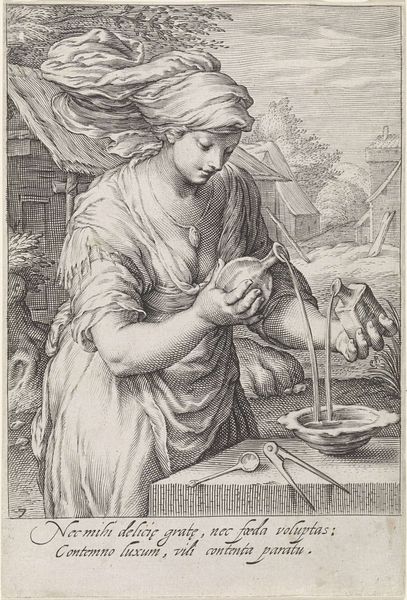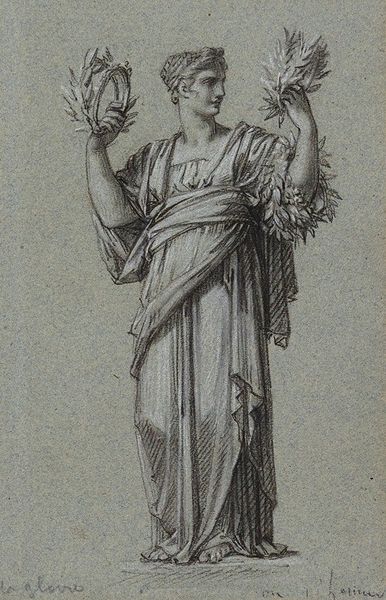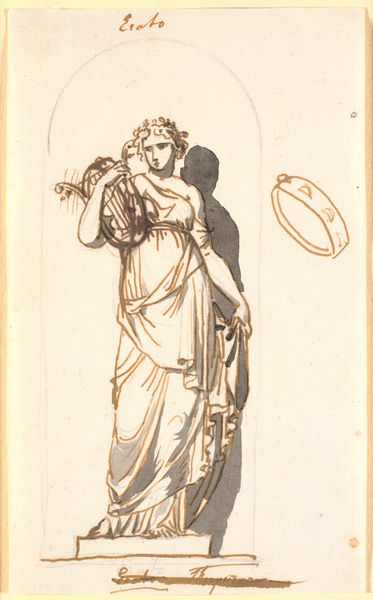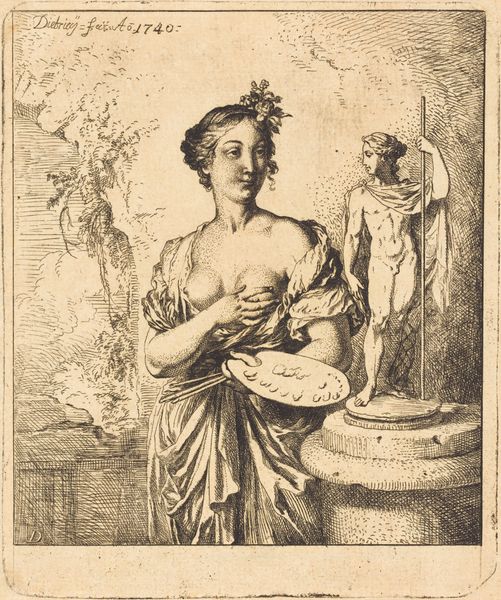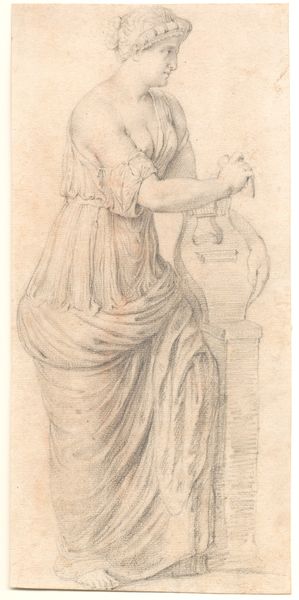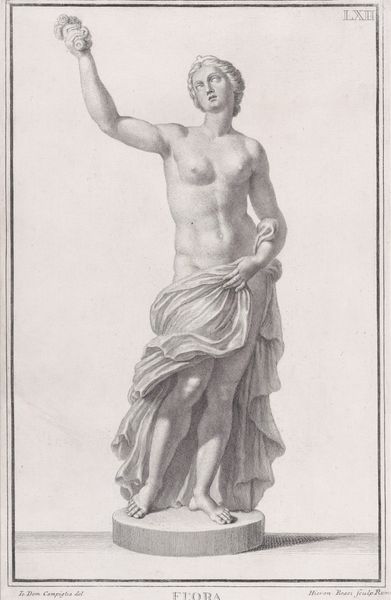
print, engraving
#
portrait
#
baroque
# print
#
old engraving style
#
figuration
#
portrait reference
#
line
#
portrait drawing
#
engraving
Dimensions: height 255 mm, width 187 mm
Copyright: Rijks Museum: Open Domain
Curator: Wenceslaus Hollar’s engraving, “Portret van Lavinia Vecellio,” dating from 1650-1651, presents a striking figure. Editor: It does feel strangely...stilted. The subject’s pose, with that tray, is unnatural. There’s a certain artificiality about it. Curator: It's worth remembering that Hollar, a prolific printmaker, wasn't necessarily aiming for pure realism. His works often served to document and disseminate images of artworks from other mediums, like paintings. Editor: That adds a layer to it, doesn’t it? Considering its Baroque styling, this piece makes me question female representation and artistry. How much agency did Lavinia have in the portrayal, or was this entirely shaped by male perceptions of her at the time? The overt display, the passive gaze—it all contributes to a rather uneasy viewing experience from a modern perspective. Curator: The context, of course, is critical. Consider the artistic landscape of the time, dominated by patriarchal structures and notions of idealized beauty. Further, let us reflect on the socio-political status and limitations placed upon women during that era. The Rijksmuseum holds it now; this portrait probably served purposes within the social milieu of its creation, like conveying lineage or status. The material conditions of women determined in very real ways their presentation in art. Editor: Exactly. While technically impressive—the lines of the engraving are remarkably detailed—I’m more drawn to dissecting what this portrait *means* within that context. Was it subverting those expectations, or reinforcing them? Is there any evidence of a woman artist's influence here or some collaboration in determining representation? We can’t divorce the artwork from the systems of power it exists within. Curator: Indeed. That dynamic tension, between artistic achievement and its relationship to power, renders this print more than just a record—it’s a social document in itself. Editor: Ultimately, “Portret van Lavinia Vecellio” reminds us how vital it is to maintain critical, contextual sensitivity when looking at art from the past. What begins with Hollar ends with us as viewers taking account of structures and processes to be aware of the legacy.
Comments
No comments
Be the first to comment and join the conversation on the ultimate creative platform.
